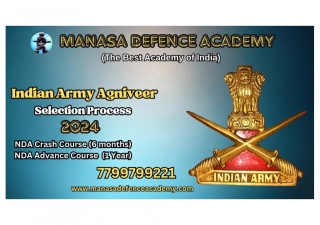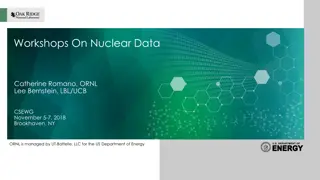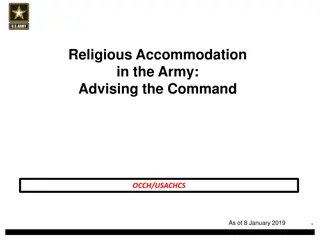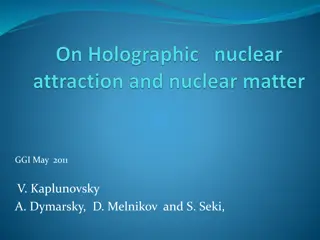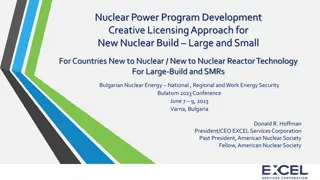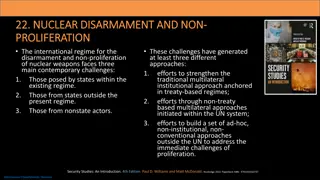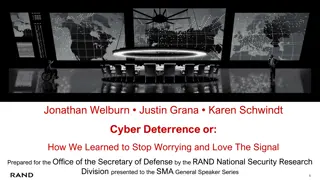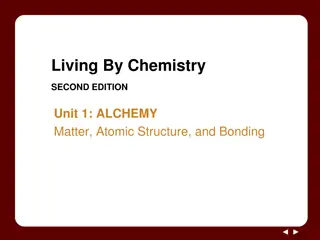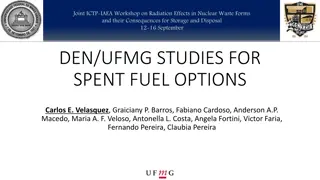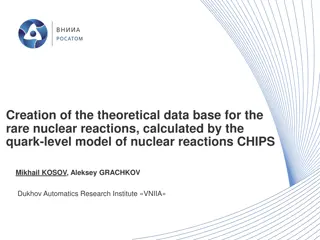
European Nuclear Deterrence History
Explore the historical context of European nuclear deterrence from 1955 to 1991, examining key events like the Cold War, post-World War II division, and the role of Germany. Understand the evolution of strategic thinking and decision-making in the realm of deterrence.
Download Presentation

Please find below an Image/Link to download the presentation.
The content on the website is provided AS IS for your information and personal use only. It may not be sold, licensed, or shared on other websites without obtaining consent from the author. If you encounter any issues during the download, it is possible that the publisher has removed the file from their server.
You are allowed to download the files provided on this website for personal or commercial use, subject to the condition that they are used lawfully. All files are the property of their respective owners.
The content on the website is provided AS IS for your information and personal use only. It may not be sold, licensed, or shared on other websites without obtaining consent from the author.
E N D
Presentation Transcript
THE U.S. ARMY AND NUCLEAR DETERRENCE, 1955 1991 A EUROPEAN HISTORICAL CONTEXT David R. Dorondo, Western Carolina University; STRATCOM Academic Alliance 1
Volcanoes thought extinct turned out not to be. Jonathan Glover, Humanity: A Moral History of the Twentieth Century Russia has demonstrated its willingness to use force to alter the map of Europe and impose its will on its neighbors, backed by implicit and explicit nuclear first-use threats. 2018 U.S. Nuclear Posture Review 2
RATIONALE FOR HISTORICAL CONTEXT WHILE AVOIDING HISTORICAL DETERMINISM Cold War lest one forget after nearly 30 years. History must inform our thinking and decisions regarding deterrence. MG Jung Woong Lee, ROK. DS2018 The Army: A strategic deterrent force well before Strategic Landpower s push ca. 2013 (See, e.g., GEN George Marshall s Victory Report, 1.IX.1945) Post-2014: deter and reassure in all domains, despite the flap over the 2018 Nuclear Posture Review (particularly re: cyber attacks but also, possibly, hypersonic NNWs) 3
FROM VICTORY IN EUROPE IN 1945 8 May 1945 V-E Day Approx. 589,269 US Army/USAAF casualties in the ETO (not including Italy) Approx. 383,000 UK total military fatalities (of approx. 450,000 total fatalities, military and civilian) Approx. 9,750,000 Soviet military fatalities (of approx. 26 million total fatalities, military and civilian) European Axis destroyed; Germany occupied and divided de facto (though not de jure before 1948) 4
TO FINAL COLD WAR DIVISION BY 1955 Between 1947 and 1955, Europe is divided NATO (4.IV.1949) and the Warsaw Pact (14.V.1955) are formed NATO conventional forces set by the Lisbon Agreement (20-25.II.1952) Nuclear forces stand up in the US, the UK, and the USSR between 1945 and 1955 (France in the 1960s) US/UK nuclear forces intended to deter both Soviet conventional numerical superiority and nuclear threats Both counter-force and counter- value (e.g.the Moscow criterion ) 5
GERMANY REMAINED AT THE HEART OF THE DIVIDE BOTH REALITY AND SYMBOL OF THE COLD WAR FEDERAL REPUBLIC OF GERMANY (FRG; EST. MAY 1949). ALWAYS THE FIRST POTENTIAL BATTLEFIELD GERMAN DEMOCRATIC REPUBLIC (GDR; EST. OCT 1949). ALWAYS THE SECOND POTENTIAL BATTLEFIELD Fulda Gap 6
THE NUCLEAR DETERRENCE PYRAMID FROM MASSIVE RETALIATION TO FLEXIBLE RESPONSE US Army (and others ) NSNWs for tactical and theater-level deterrence Long-range bomber forces and IRBMs for strategic deterrence; supplemented after ca. 1955 by ICBMs and, beginning in the 1960s, by SLBMs Forward Defense and Calculated Escalation: as low and as late as possible but as robustly and rapidly as necessary to avoid military defeat and/or surrender 7
THE EARLY KEYS TO MASSIVE RETALIATION RAF V-FORCE (AVRO VULCAN: BLUE DANUBE AND YELLOW SUN FREE-FALL BOMBS; BLUE STEEL AND SKYBOLT) USAF SAC (B-52: MK IV FREE-FALL BOMB AND DERIVATIVES; HOUND DOG, SRAM, AND, LATER, ALCM) 8
FORWARD DEFENSE: THE SETTING FOR FLEXIBLE RESPONSE AND CALCULATED ESCALATION NATO/US ARMY DISPOSITIONS PRESUMED AXES OF ADVANCE 9
THE US ARMYS PENTOMIC DIVISIONAL CONCEPT: KEY ELEMENT IN EARLY FORWARD DEFENSE AND CALCULATED ESCALATION GEN MATTHEW B. RIDGWAY CHIEF OF STAFF 1953 - 1955 PHOTO COURTESY OF CPT COLIN MARCUM GEN MAXWELL D. TAYLOR CHIEF OF STAFF 1955 1959 PHOTO COURTESY OF CPT COLIN MARCUM 10
PENTOMIC DIVISIONS NUCLEAR ARTILLERY BN (DIVARTY) Pentomic Divisional Artillery (DIVARTY) intended to deliver both conventional and nuclear fires 1 BTY 8in (203mm) towed howitzers (4) and 1 BTY Honest John tactical missiles (2 launchers) 11
US ARMY: FROM DAVEY CROCKETT, NUCLEAR LAND MINES, AND ATOMIC ARTILLERY TO CORPORAL, SERGEANT, HONEST JOHN, LANCE, AND PERSHING II THE ATOMIC WATERMELON PERSHING II 12
PROTESTS, PEACEMAKING, AND NATO CONVENTIONAL MODERNIZATION MAKE US ARMY NSNW SYSTEMS INCREASINGLY QUESTIONABLE IN THE DECADE AFTER 1980 PROTESTORS FROM HEILBRONN IN BONN, CA. 1983 1984 SIGNING THE INF TREATY; 8.XII.1987 13
CONCLUSION Planning deterrence means thinking through the possible reasoning of an adversary and the way in which alternative courses of action might appear to him in advance. It also means doing this in his terms, and not in ours; and allowing for how he might think in future circumstances, not just in today s. In essence we seek to ensure that, whatever military aggression or political bullying a future [Russian] leader might contemplate, he could not foresee any likely situation in which the West would be left with no realistic alternative .No safer system than deterrence is yet in view, and impatience would be a catastrophic guide in the search. To tear down the present structure, imperfect but effective, before a better one is firmly within our grasp would be an immensely dangerous and irresponsible act. Statement on the Defence Estimates 1981 (Cmnd. 8212-1, pp 13-14) See Quinlan, Thinking About Nuclear Weapons (2009/2013) 14
FURTHER READING Bacevich, A. J. The Pentomic Era: The U.S. Army Between Korea and Vietnam (Washington: NDU Press, 1986) Frankel, Michael, et al. Nonstrategic Nuclear Weapons at an Inflection Point: National Security Perspective (Baltimore: JHUP/APL, 2017) Glover, Jonathan. Humanity: A Moral History of the Twentieth Century (New Haven: Yale University Press, 1999) Hennessey, Peter. Cabinets and the Bomb (Oxford: Oxford University Press, 2007) Kr ger, Dieter and Volker Bausch, eds. Fulda Gap: Battlefield of the Cold War Alliances. Trans. David R. Dorondo (New York: Lexington Books, 2018) Quinlan, Michael. Thinking About Nuclear Weapons: Principles, Prospects, Prospects (Oxford, Oxford University Press, 2009) 15


